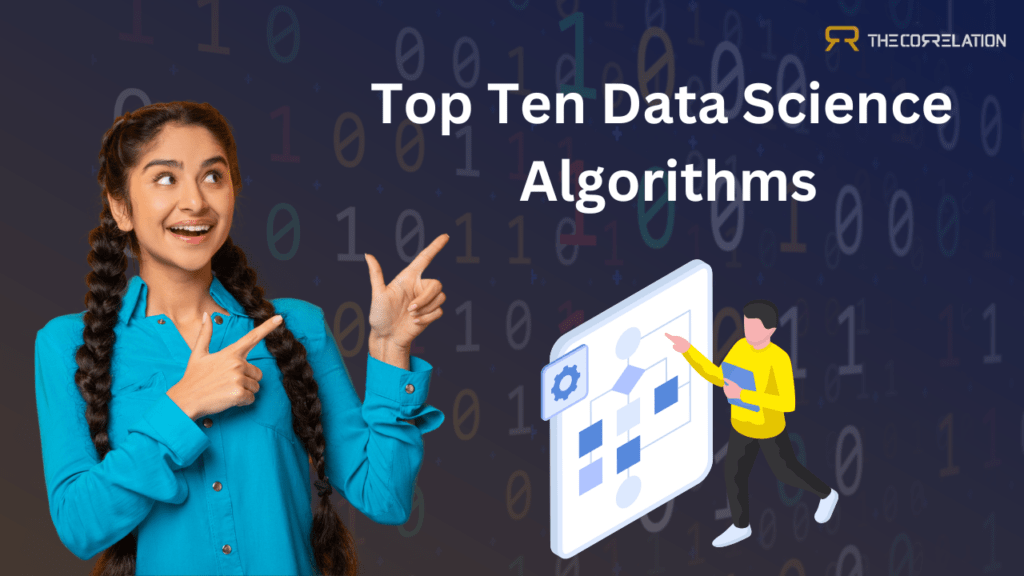The following list of the top 10 data science algorithms is compiled based on how well they perform a variety of tasks, including clustering, regression, and classification:
Source: Top Ten Algorithms
The Linear Regression
The link between a dependent variable and one or more independent variables is modeled using a linear method.
Applications include risk management, sales forecasting, and housing price prediction.
Sources: KDnuggets, Towards Data Science
Regression using Logistic Regression
Description: Models the probability of a categorical dependent variable and is used in binary classification issues.
Applications include marketing campaigns, medical diagnosis, and credit scoring.
Sources: Towards Data Science, Analytics Vidhya
Source: Logistic Regression
Decision Trees
A model resembling a tree that is employed to make judgments by dividing data into smaller groups.
Applications include credit risk analysis, fraud detection, and customer segmentation.
Sources: GeeksforGeeks, DataCamp
Random Forest
An ensemble learning technique that avoids overfitting and increases accuracy by combining many decision trees.
Applications include picture categorization, recommendation algorithms, and loan default prediction.
Sources: Mastering Machine Learning and Towards Data Science
SVMs, or support vector machines
This is a supervised learning model that classifies data points by determining the best hyperplane.
Applications include bioinformatics, facial identification, and text classification.
Sources: Towards Data Science, KDnuggets
KNN, or K-Nearest Neighbors
This non-parametric technique compares newly collected data points with preexisting data points to perform regression and categorization.
Applications include anomaly detection, recommendation systems, and handwriting recognition.
Sources: Machine Learning Mastery and Analytics Vidhya
K-Means Clustering
A method for unsupervised learning that clusters data according to similarities.
Applications: Image compression, document grouping, and market segmentation.
Sources: GeeksforGeeks, Towards Data Science
Source: K means Clustering
Analysis of Principal Components (PCA)
A method for reducing the dimensionality of data that converts high-dimensional information into a lower-dimensional format.
Applications include finance, gene expression analysis, and image processing.
Sources: Vidhya Analytics and KDnuggets
Source: Principal Component Analysis
Naive Bayes
This probabilistic classifier relies on the independence of predictions and is based on the Bayes theorem.
Applications include recommendation engines, sentiment analysis, and spam screening.
Sources: Mastering Machine Learning and Towards Data Science
GBMs, or gradient-boosting machines
An ensemble method that produces models one after the other while fixing the mistakes in earlier models.
Applications include predictive maintenance, financial modeling, and web search ranking.
Sources: Towards Data Science, Analytics Vidhya
These algorithms provide the means to evaluate large amounts of data and extract valuable insights, and they are the cornerstone of many sophisticated data science applications.


